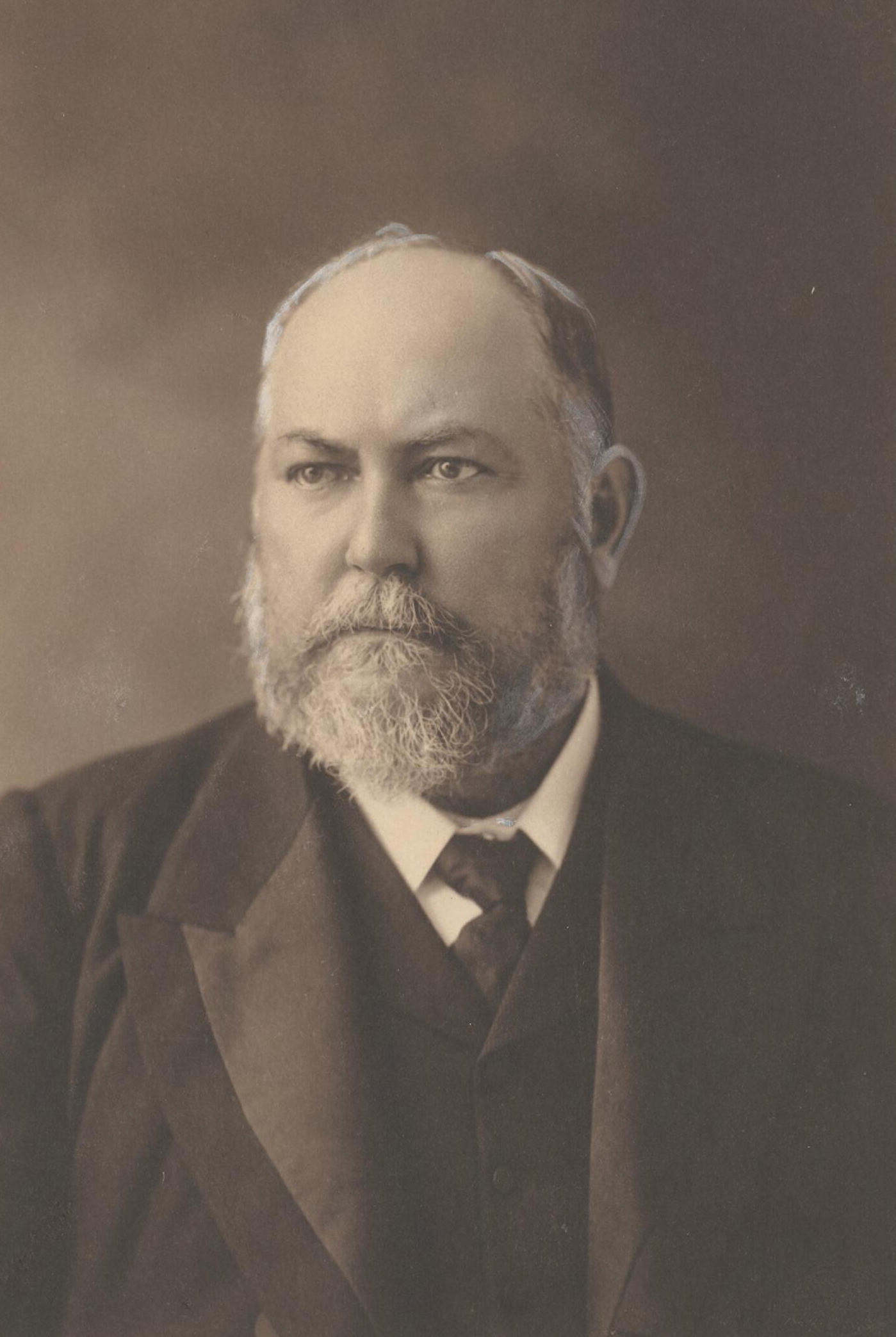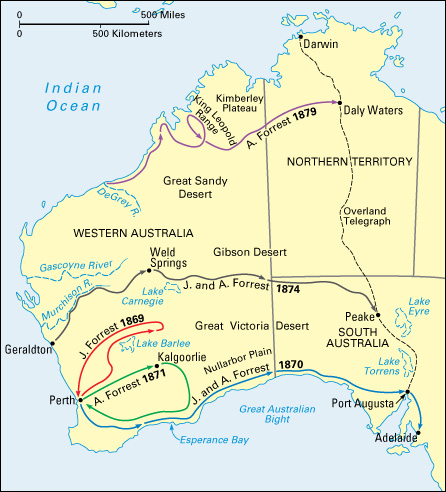Forrest is the family name of two brothers, born in Australia, who did much for Australian exploration and politics.
Sir John Forrest
(1847-1918) led expeditions across Western Australia from 1869 to 1874. When the colony gained responsible government in 1890, he became its first premier. In 1901, he was elected to the first federal Parliament. In 1918, he became the first Australian-born peer when he was made first Baron Forrest of Bunbury. 
Alexander Forrest
(1849-1901) accompanied his brother on his expeditions, and in 1879, led his own expedition into the northern regions of Western Australia. In 1890, he became a member of the first state parliament. 
Early lives.
Both John and Alexander were born in Bunbury, Western Australia. John was born on Aug. 22, 1847. Alexander was born on Sept. 22, 1849. The boys’ father, William Forrest, was a miller and farmer. Both brothers became surveyors.
Exploration.
In March 1869, John Forrest was asked to lead and navigate for the botanist Ferdinand von Mueller and his party. Mueller was preparing an expedition from Perth to try to determine what had happened to the German explorer Ludwig Leichhardt, who had disappeared with his group. Mueller’s party explored about 2,000 miles (3,200 kilometers) of previously unknown country. They named a number of geographical features. But they found no trace of the missing men. During the following year, accompanied by Alexander, John Forrest crossed the southern portion of the continent from Perth to Adelaide, following approximately the same route taken by John Eyre in 1839. The Forrest party discovered the Eucla pastoral country, but suffered incredible hardships during the five-month journey.

Two years later, Alexander led a party from Kalgoorlie east and then south to Esperance. The rich pastoral country he discovered was later leased.
In 1874, Alexander joined John’s expedition to explore the Murchison and Gascoyne districts and the unknown center of the colony. Some people believed that a vast inland river system drained this area. The Forrests proved that this belief was wrong. They were also the first to make the crossing from the west coast to the Overland Telegraph, which ran from southern Australia to Darwin in the north. The brothers were accompanied by such skilled Aboriginal trackers as Tommy Windich.
On April 1, 1874, John left Geraldton with an expedition of 5 experienced men and 21 horses, bound for the head of the Murchison River. In June, the expedition was attacked at Weld Springs by 30 or 40 Aboriginal people. John’s group fired at their attackers, severely wounding one of them and causing the rest to flee.
The expedition had to proceed from one water hole to the next because the horses needed water every 12 hours. The party nearly died of thirst as they crossed the desert, but toward the end of the journey, they enjoyed some good fortune. Rain, which was rare in the area, fell ahead of the party and filled rock holes and claypans. On September 27, they sighted the Overland Telegraph Line. On Nov. 3, 1874, they reached Adelaide, where they were enthusiastically greeted.
Shortly after this expedition, John made a trip to England. There, he published a book Explorations in Australia. In early 1876, he was invited to become a member of the Royal Geographical Society. One of the two gold medals presented yearly by the society for outstanding work in exploration was awarded to him.
In 1879, the two brothers headed a party to survey the recently settled country between the De Grey and Ashburton rivers in the northwest. In 1879, Alexander led a party to explore and map the unknown Kimberley district in the extreme northern region of the colony. Alexander published his Journal of Expedition from De Grey to Port Darwin in 1880.
Political careers.
In 1883, John Forrest was appointed surveyor general. This appointment made him the first colonial-born individual to serve on Western Australia’s Executive Council.
In 1890, the colony was granted responsible government. John Forrest became Western Australia’s first premier and treasurer. During the next decade, gold discoveries attracted new settlers, and the population quadrupled. Forrest set up public works schemes for railroads, water supplies, and means of communication. The royal mint was established. The Agricultural Bank, founded in Forrest’s time, greatly helped farmers, who could now borrow money to develop their land. Forrest’s administration liberalized voting regulations, and earlier property qualifications for electors were removed. One of the greatest works carried out under Forrest was the construction of the Fremantle Harbour. All vessels could use this harbor, and they no longer had to sail to King George Sound. The confidence of the government in these projects and the famed engineering venture under C. Y. O’Connor of pumping water to the gold fields inspired investors abroad to lend money to the colony.
John Forrest also took an active part in discussions within federal councils and conventions. He did not believe that federation would be in Western Australia’s best interests. Because the state was granted its independence after the other colonies, he feared it would have difficulty maintaining equal status.
After federation in 1901, Forrest was elected to the new Parliament unopposed. He became successively postmaster general, minister for defense, and minister for home affairs. He served as treasurer in five federal cabinets. Forrest also played a significant part in the formation of the two-party political system in Australia. In 1918, he was the only member of the first federal Cabinet still in active politics. He died on Sept. 3, 1918.
Alexander Forrest, working as a land agent, helped develop the Kimberley area. It was proclaimed a new electorate in 1887, and he was returned as member. After the government divided the area, in 1890, he represented West Kimberley. He held that seat until his death. He also served as mayor of Perth from 1892 to 1895 and from 1897 to 1900. He died on June 20, 1901.
See also Australia, History of.
